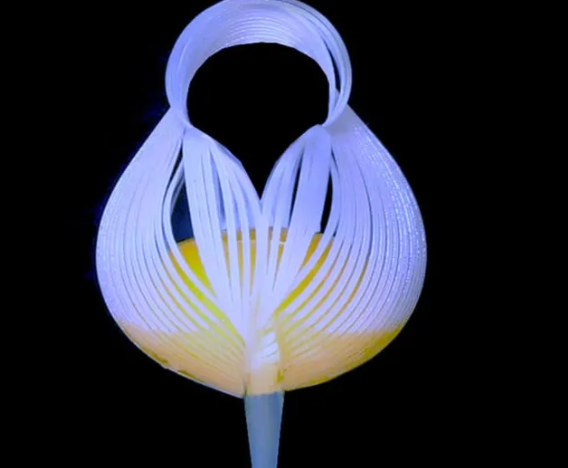This Robot Gripper Is So Delicate It Can Pick Up Egg Yolks Without Breaking It
This Robot Gripper Is So Delicate It Can Pick Up Egg Yolks Without Breaking It
Designing robots that can handle delicate objects is a major challenge for engineers. For warehouses, robots have been developed that use soft rubber fingers to grasp objects such as fruit, but what about targets that are even more delicate? Like, say, raw egg yolk?
Well, researchers at North Carolina State University have demonstrated a new type of gripper that could one day help machines pick up even the most breakable objects—including yolks. Inspired by the Japanese art of kirigami (like origami, but you fold and cut paper), their gripper is made from a flat sheet of material cut with parallel slits. When the ends of the sheet are pulled apart, the gripper forms itself into a 3D sphere that can be used to gently and accurately grasp objects, from live fish to a single strand of human hair.
Key to the design (which you can see in action in the video below) is that it applies minimal pressure to its target and engages it in a kirigami shape.
"Traditional grippers hold an object firmly—they hold things by applying pressure to them," Ji Yin, an associate professor at NC State and one of the researchers involved in the project, said in a press release. "This can cause problems when trying to grab delicate objects like egg yolks. But our grippers essentially circle an object and then pick it up—just like we do with our grippers around an object . Hands wrap. It allows us to 'grip' and even move delicate objects without sacrificing accuracy."
The researchers' work, which was published in an open-access paper in Nature Communications, relies heavily on their ability to predict the final size of the gripper from the size of the original kirigami sheet. So, for example, a 2D kirigami sheet with a circular border, when cut correctly, turns into a sphere. Using 3D simulation software, they were able to rapidly prototype several different grippers before finalizing their design.
This proof-of-concept work is not yet ready for use in a commercial setting, but engineers say they are working on the next stage of development of the technology. "We are now in the process of integrating this technology into soft robotics technologies to address industrial challenges," says Yin. "We are open to working with industry partners to explore additional applications and find ways to transfer this approach from the laboratory to practical use."







No comments